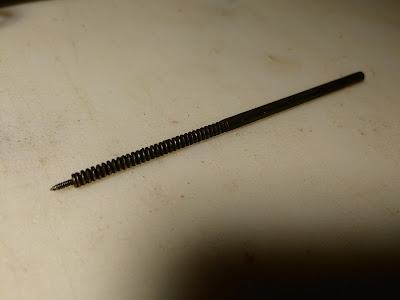Saturday, October 5, 2024
My 2024 Summer Project
This beautiful 1927 Raleigh Roadster came to me by way of a friends referral. I have been known for quite a while to have a love for Pre-War Raleighs, so when I was told about it being available, I said that I was very interested.
A friend of s friend, Ryan called and told me enough for me to say Yes.
"Bring it over and I will give you an extra $50 for doing so.
After a few texts back and forth, we pined a date to get together at my house and me buy the bike.
Ryan showed exactly on time and as he rolled the bike into my barn, I handed him the cash. We had agreed on the price and I was happy to have the bike.
It was all there. the only thing that didn't look original were the grips and the tires.
It wasn't rusty, but had not been cleaned or polished for a very long time. Badly oxidized paint and a baked on grease it places that would. be impossible to get to with dismantling the bike first.
The numbers on the hib proved that the bike was built not before 1926.
The story with the bikes past is that it had been brought overseas years ago by a Gent and after passing away, aquired by his wife. Im not sure how long it sat before she sold it, but it seems that l might be the 3rd owner.
Raleighs before the 1930's are rare here in the United States. The Raleigh only started being imported with Raleigh of America around 1932.
The bike had been ridden. The rubber blocks from the pedals show that. Kept in OK shape, it is clear the bike was never left outside for any length of time.
What a always do when I get a new Raleigh is dismantle it and clean and polish
I know enough to never repaint the frame, but have touched up spots. This bike was different. I gave it some thought and figured it might be best to just leave it alone.
After about 2 weeks, I just started taking it apart. It was really dirty and there were places that I never could have gotten to without removing parts first.
The biggest fix with the most effect was the shifter bable housing. The covering on the housing had over time had become cracked.
I didn't want to simply replace the housing that would require cutting the cable. I wanted to keep it intact so I wouldn't have to fix a new cable end. The original was fabric covered and shellacked.
A trick that came to in the middle of the night was to use hollow boot lace to cover housing. I have been told that fabric covered cable housing is available, but I never found any.
The boot lace trick would allow me to not cut the cable but instead slide the woven cloth tube over the barrel adjuster at the end and work it up to the shifter. With two short pieces of shrink tubing,seal the ends. it work perfectly!
One of the steps that really set me back was the day I first removed the rear wheel. I fully understood all the steps of first removing the brake pads and then removing the axle nuts. Thats where it went wrong. While unscrewing the right nut, out from the left side shot the left side of the indicator spindle. Like a rocket, it shot over the railing of the deck and into the bushes and grass below!
You would think that it would be an easy find with a big enough magnet but where is a magnet? First I needed to find a magnet. I knew I had an old speaker magnet somewhere in my basement for dealing with ball bearings, but after an hour of looking, I gave up. The problem was to replace the part could not only be costly but could require another bicycle of the same vintage. Back to hands and knees raking with fingers, it became important to call my friend Debby and let her know that a visit that afternoon was not going to work. She senced that I had maybe a bigger problem that would maybe go smoother with her help. She said, "Im coming over!" About a half hour later, Debby arrived with a cold
six-pack, gave me a beer and asked,"Where do you think it is?"
I pointed and she went to work!
Subscribe to:
Post Comments (Atom)


















No comments:
Post a Comment